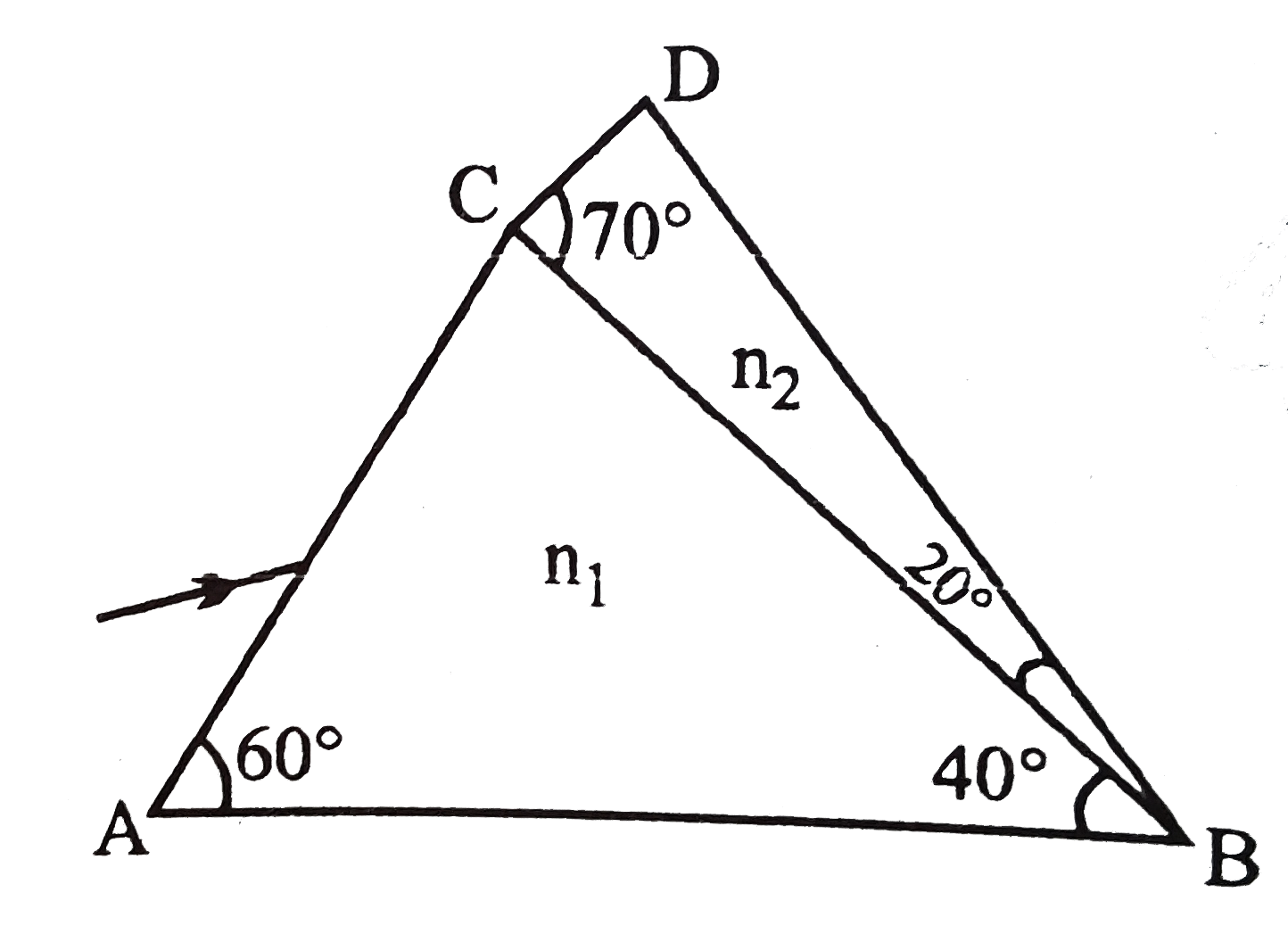Two particles of masses 1.0 kg and 2.0 kg are placed at a separation of 50 cm. Assuming that the only forces acting on the particles are their mutual gravitation find the initial acceleration of the two particles.Solution in Gujrati
Force exerted by one particle on another
Acceleration of heavier particle
This example shows that gravitation is verty weak but only this force keep bind our solar system and also this universe of all galaxies and other interstellar system.
Topper's Solved these Questions
- GRAVITATIONBOOK - ALLEN CHAPTER - GRAVITATIONEXERCISE - Exercise 1 (Check your Grasp)
28 Videos
- GRAVITATIONBOOK - ALLEN CHAPTER - GRAVITATIONEXERCISE - Exercise 2 (Brain Teasers)
27 Videos
- GEOMETRICAL OPTICSBOOK - ALLEN CHAPTER - GEOMETRICAL OPTICSEXERCISE - subjective
14 Videos
- KINEMATICS-2DBOOK - ALLEN CHAPTER - KINEMATICS-2DEXERCISE - Exercise (O-2)
47 Videos
Similar Questions
Three identical point mass each of mass 1kg lie in the x-y plane at point (0,0), (0,0.2m) and (0.2m, 0). The net gravitational force on the mass at the origin is
View SolutionOne projectile after deviating from its path starts moving round the earth in a circular path of radius equal to nine times the radius of earth R. Its time period is
View SolutionA prism of refractive index n1 & another prism of reactive index n2 are stuck together without a gap as shown in the figure.The angle of the prisms are as shown. n1&n2depend onλ,the wavelength of light according to n1=1.20+10.8×104λ2&n2=1.45+1.80×104λ2 where λ is in nm.

(i)Calculate the wavelength λ0for which rays incident at any angle on the interfaceBCpass through without bending at that interface.
(ii) for light of wavelength λ0,find the angle of incidencei on faceACsuch that the deviation produced by the combination of prism is minimum.
View SolutionA particle is moving in xy-plane .At certain instant the components of its velocity and acceleration are as follows ux=3m/s,uy=4m/s,ax=2m/s2anday=1m/s2. The rate of change of speed at this moment is
View SolutionTwo small bodies of masses 10 kg and 20 kg are kept a distnce 1.0 m apart and released. Assuming that only mutual gravitational force are acting, find the speeds of te particles when the separation decreases to 0.5 m.
View SolutionTwo small bodies of masses 2.00 kg and 4.00 kg are kept at rest at a separation of 2.0 m. Where should a particle of mass 0.10 kg be placed to experience no net gravitational force from these bodies? The particle is placed t this point.What is the gravitational potential energy of the system of three particle with usual reference level?
View SolutionTwo particles of masses 1kg and 2kg are placed at a distance of 50cm. Find the initial acceleration of the first particle due to gravitational force.
View Solution1 किग्रा तथा 10 किग्रा द्रव्यमान के दो कण पारस्परिक गुरुत्वाकर्षण बल के अंतर्गत गति कर रहे है|इन पर कार्यरत (i ) बल का ,(ii ) त्वरण का अनुपात क्या होगा?
View SolutionTwo particles of masses 1 kg and 2 kg are placed at a separation of 50 cm find out gravitational force between them
View SolutionTwo particles of masses 0.2 kg and 0.8 kg are separated by 12 cm. At which point from the 0.2 kg particle, gravitational field intensity due to the two particles is zero?
View Solution1 मीटर भुजा वाले समबाहु त्रिभुज के शीर्षों पर 1.0 किग्रा., 2.0 किग्रा. तथा 3.0 किग्रा के तीन कण रखे गए हैं । कणों के निकाय का द्रव्यमान केंद्र ज्ञात कीजिये ।
View SolutionTwo particles of mass 0.5 kg each go round a circle of radius 20 cm on accound of their mutual gravitational attraction. What will be the speed of each particle ?
View Solution1 kg एवं 2 kg द्रव्यमानों वाले दो कण 50 cm दूरी पर रखे हुए है। यह मानते हुए कि कणों पर केवल पारस्परिक गुरूत्वाकर्षण बल ही लगता है। भारी कण का प्रारम्भिक त्वरण ज्ञात कीजिये।
View SolutionTwo small bodies of masses 10 kg and 20 kg are kept a distance 1.0 m apart and released. Assuming that only mutual gravitational force are acting, find the speeds of the particles when the separation decreases to 0.5 m.
View SolutionTwo small bodies of masses 2.00 kg and 4.00 kg are kept at rest at a separation of 2.0 m. Where should a particle of mass 0.10 kg be placed to experience no net gravitational force from these bodies? The particle is placed at this point. What is the gravitational potential energy of the system of three particle with usual reference level?
View SolutionTwo particles of masses 1.0 Kg and 2.0 Kg are placed at a seperation of 50 cm. Assuming that only gravitational forces acting on the particles mutually, the initial acceleration of the first particle.
View Solution
